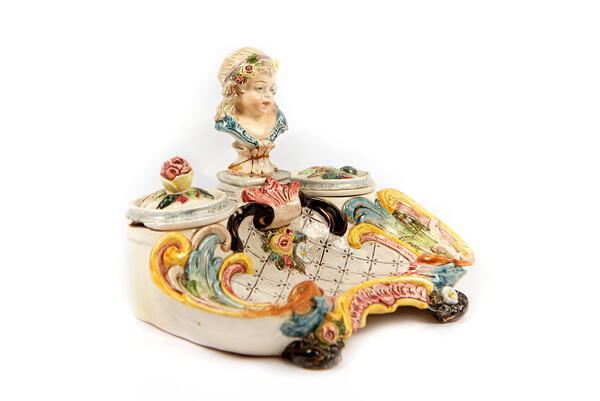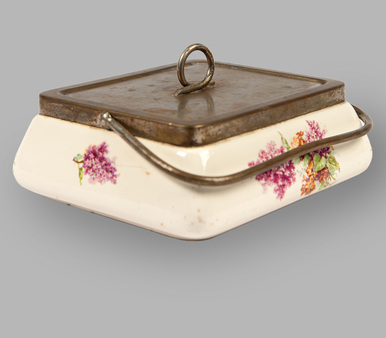The Kirsanov Local History Museum houses an inkstand that belonged to Elena Mikhailovna Boratynskaya.
Throughout the 19th century the inkwell played an enormous role in everyday life. It was not only children at school who had to handwrite. Adults did it as well — a lot and for different occasions: they drew up and copied business papers and dinner menus, kept diaries, composed poems and letters. In a noble manor house, the inkwell was part of an inkstand, which was heavy and magnificent, with inlaid and sculpted ornamentation.
Such a utensil contained a dozen of accessories: an inkwell itself (a solid, copper, bronze or crystal one, covered with a lid protecting against flies and ink drying out), a sand shaker (a container similar to a salt-cellar with holes in the lid: clean sand was sprinkled on the written work to make the ink dry faster), a paperweight (to blot the written work and press the papers together). An inkstand could also include a seal with the owner’s coat of arms, pencil-cases, book-holders, trays for stamps, boxes for sealing-wax and writing paper. All this multitude of things was arranged around the inkwell. Alexander Sergeyevich Pushkin dedicated a poem to his inkwell.
Throughout the 19th century the inkwell played an enormous role in everyday life. It was not only children at school who had to handwrite. Adults did it as well — a lot and for different occasions: they drew up and copied business papers and dinner menus, kept diaries, composed poems and letters. In a noble manor house, the inkwell was part of an inkstand, which was heavy and magnificent, with inlaid and sculpted ornamentation.
Such a utensil contained a dozen of accessories: an inkwell itself (a solid, copper, bronze or crystal one, covered with a lid protecting against flies and ink drying out), a sand shaker (a container similar to a salt-cellar with holes in the lid: clean sand was sprinkled on the written work to make the ink dry faster), a paperweight (to blot the written work and press the papers together). An inkstand could also include a seal with the owner’s coat of arms, pencil-cases, book-holders, trays for stamps, boxes for sealing-wax and writing paper. All this multitude of things was arranged around the inkwell. Alexander Sergeyevich Pushkin dedicated a poem to his inkwell.





